I wasn’t going to write about Lake Rotoiti, because after all I posted about it almost exactly two years ago when I last visited the tiny town of St Arnaud. What more could I possibly have to say? But then again I’ve upgraded my camera and levelled up my photography skills, so I got some of the shots I missed out on last time. I had only one regret from my last visit…but would I have the guts to put it right?
We pulled up into the Kerr Bay camp site and made ourselves at home as a light rain began to fall. As soon as we had our lodgings in order the weather cleared and it was time to check out our surroundings. We chose a casual wander along the Bellbird/Honeydew walks, smaller loops near the beginning of the three hour walk to the head of the lake that I’d completed on my last visit.
In the process, I managed to get a much nicer picture of one of the cornerstones of this unique ecosystem, the nectar-bearing tail of the honeydew scale insect poking out from a sooty mould covered beech trunk.

The honeydew not only feeds the mould that gives the local beech trees a gothic look, it also provides an excellent energy source for native birds. Unfortunately, it also attracts introduced wasps, as I noticed on my last visit.
Remarkably, and despite my skeptical remarks two years ago, the Department of Conservation’s effort to control the wasp plague seems to have worked wondfully. We noticed only a few of the nasty creatures here and there – a far cry from my previous experience when I couldn’t take a single step without ducking and dodging.
This area is part of the Rotoiti Nature Recovery Project, started in 1997 as a way to provide a mainland “island” sanctuary for wildlife. Among other things, it is believed to be the largest wasp control program in the world.

Satisfied, we returned to Kerr Bay, where I proceeded to introduce myself to the locals. First I checked the dock closest to the camp site, to see if I could find any eels. But the rough weather had whipped up the water so that it was impossible to see below the surface. I had to be content with the swans and ducks bobbing on the waves instead.
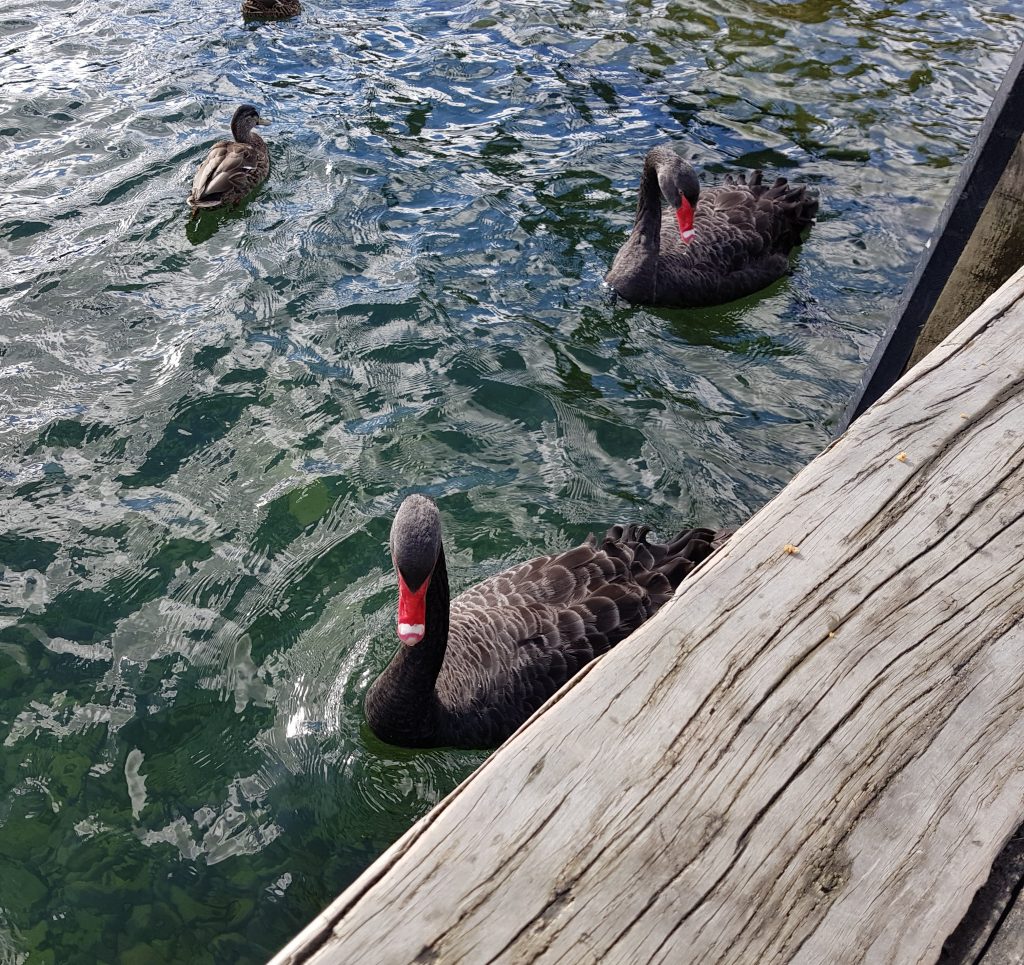
I also made the acquaintance of Alphonse, Kerr Bay’s single mandarin duck. He arrived mysteriously one day, possibly as an escaped pet, and has made himself at home here ever since. While his colourful plumage is looking just a little bit scruffy, it doesn’t seem that life in the wild disagrees with him too badly.
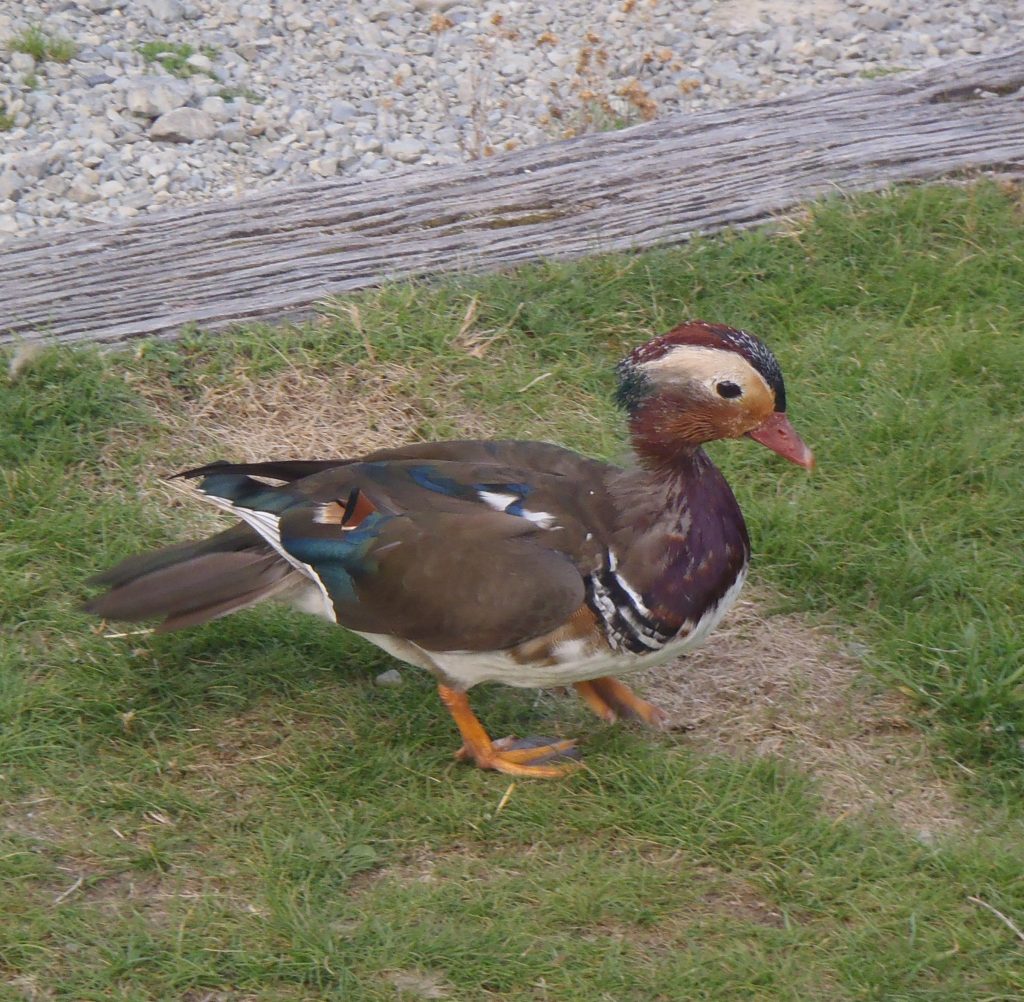
I also met a pitiful one-legged duck who alternately hopped and wiggled herself toward me. The good news is I think she’s doing okay – I also encountered a very similar duck two years ago. My guess is that the ever-present tourists take pity on her and keep her fed very well.
The next morning I explored in the other direction, taking a track that lead to neighbouring West Bay. From a secluded beach I was treated to an excellent view of the 1421m high Pourangahau, or Mount Robert, along with an informational panel on its history.

Until the 1880s, Pourangahau was covered in lush beech forest exactly the same as the rest of the mountains flanking this deep glacier-hewn valley. But in 1887 its flanks were swept by fire, and after that further fires were used to maintain grazing grassland for run holders.
Unfortunately that meant a massive increase in erosion for poor Mount Robert, and although current protection and replanting is helping to re-establish its natural forest covering, by the time it does so the mountain will be a visibly different shape from the others here.
Human interference has changed the face of this mountain for a long time to come.
Reflecting on how ignorant actions can have such huge ramifications, I continued the walk all the way to West Bay, enjoying the occasional company of fantails and bellbirds. Then I returned to our camp site the long way via the Moraine Walk.
Now, finally, it was time to complete my unfinished business. I chugged a single Woodstock for liquid courage (all that I could afford from St Arnaud’s single pricey store) and headed for the farthest dock. Stripping off my shoes, socks and pants, I dipped a toe into the clear waters.
I have noticed something interesting when venturing into New Zealand’s lakes – they are unexpectedly warm! I can’t stand sea or river bathing in our frigid waters, but I find our lakes quite pleasant.
But I wasn’t here just to paddle, I was here to make new friends, and use my camera’s underwater function to capture them in their natural environment. I knew the eels here were pretty bold, but I had no idea how they’d react as I approached – would they flee?
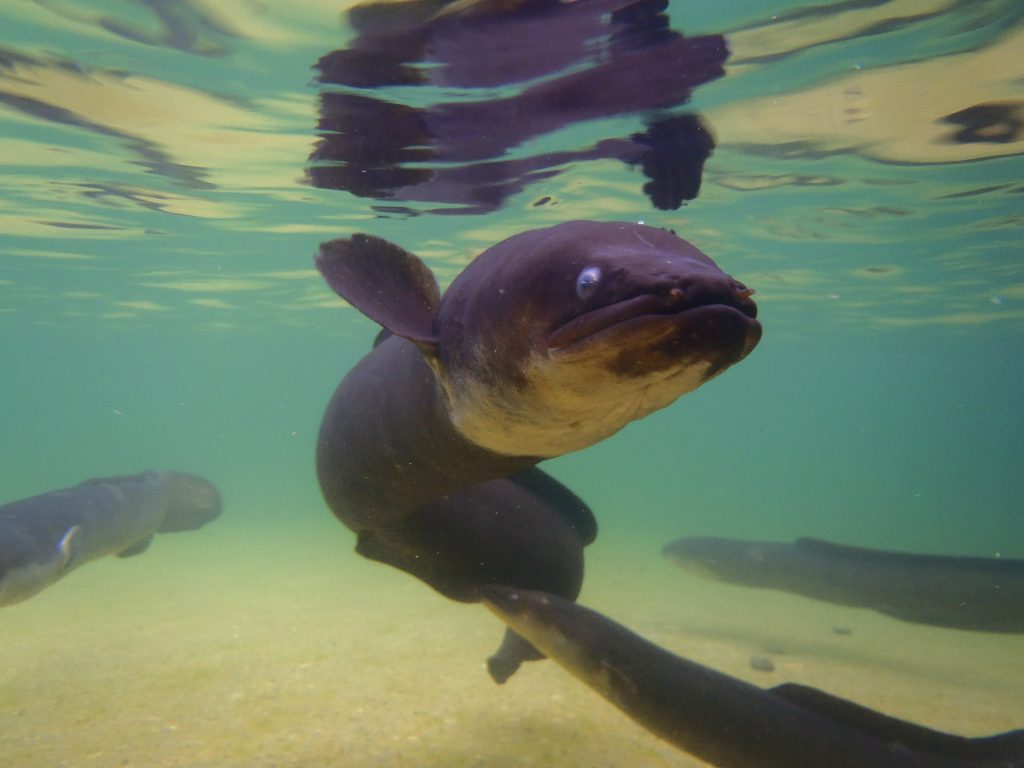
Astonishingly, the opposite occurred, and the fearsome underwater denizens of Lake Rotoiti immediately approached to investigate their new guest. As soon as I dipped my camera below the surface, they moved in to check it out. Encouraged, I held out a hand to see what they would make of a human gesture of friendship.

Alas, eels don’t understand our ways, and a mouth filled with velcro-like teeth clamped down on my thumb for a brief instant, leaving me with a superficial graze.
Most of the eels were gathered in a great slimy snuggle around one of the piles, gazing at me with blinkless blue eyes. Occasionally one or more would cruise out to reconnoitre the area before returning.
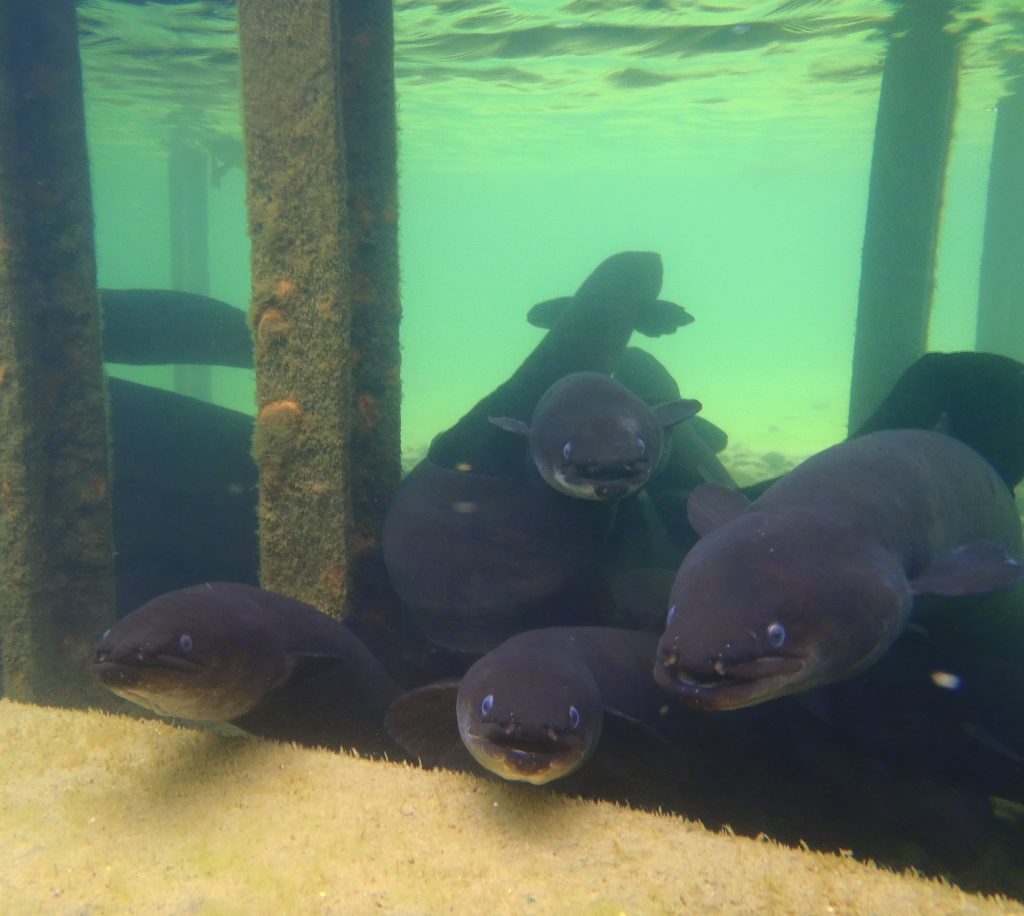
Once they realised I was neither edible, nor bearing any edible substance, my new friends quickly lost interest. Fairweather friends indeed! I left the lake and re-pantsed myself, pleased to say I’d finally checked off this eely encounter from my bucket list.
That done, it only remained to watch the sunset over Rotoiti as a means of farewelling the beautiful lake – until next time!
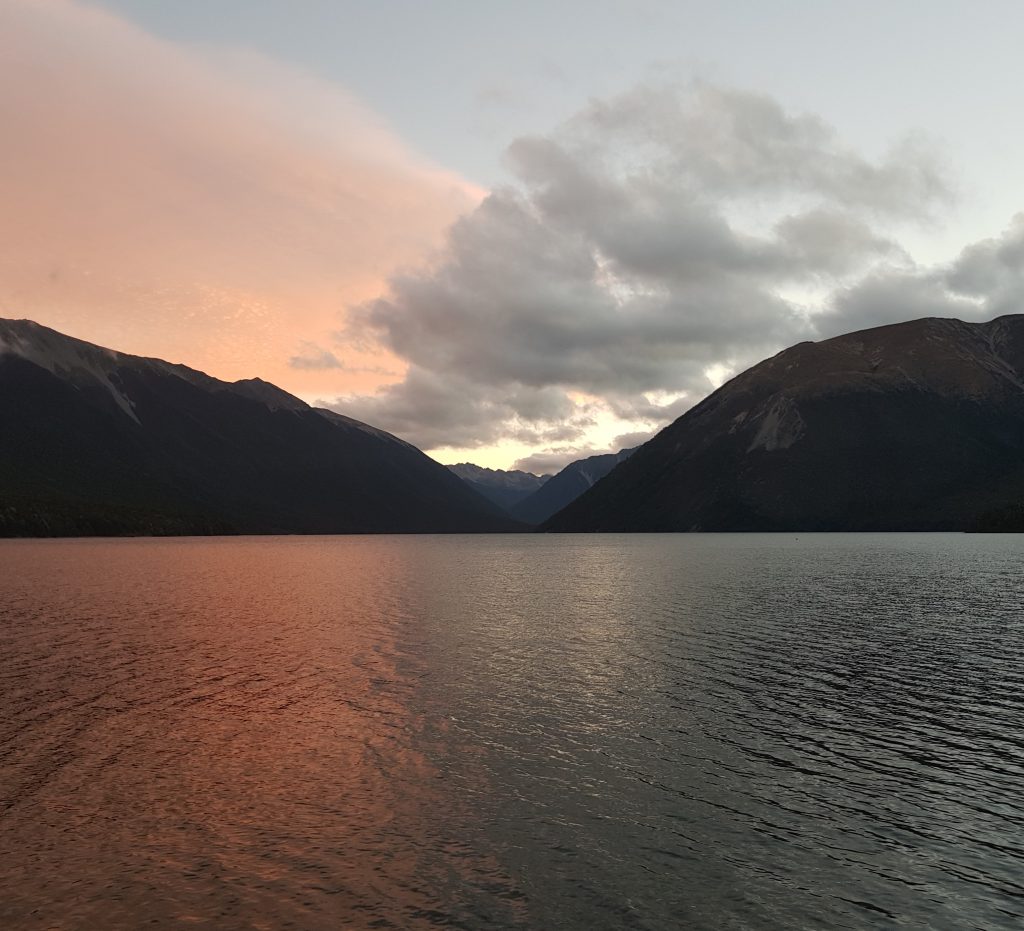
References:



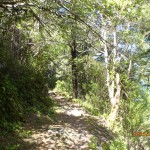
One thought on “An Eely Encounter at Lake Rotoiti”
Comments are closed.